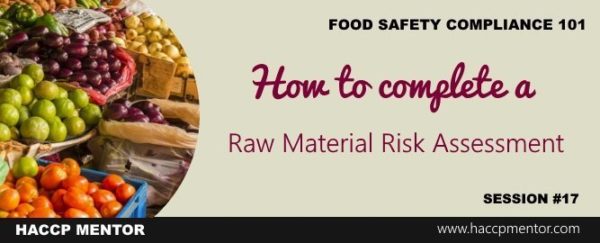More and more customer standards are requesting that risk assessments be completed for all raw materials that you purchase in your food business. This includes both food ingredients, chemicals and food packaging. This type of risk assessment is one that a lot of people and QA managers struggle with but it doesn’t have to be an over-whelming process for you. The following 3 tips can help you undertake your raw material risk assessment in no time at all.
1. Be clear on the hazards
Like any other type of risk assessment, the idea is to identify what can go wrong (the hazard) and then assess that particular hazard for the likelihood that it will happen and the consequence of if the hazard did happen. Be clear on the hazards you want to assess your raw materials against.
There are some very basic hazards to address including allergens, microbiological, chemical and physical. You should also consider other hazards including regulatory, intrinsic hazards (eg. pitts in olives, bones in chicken), geographical origin or the raw material and format that the raw material is purchased.
2. Define risk assessment ratings
Have clear definitions associated with your likelihood and consequence ratings. Any risk assessment tool that you use should have clear definitions written for what the different ratings actually mean. For example, if something is rated a ‘medium consequence’ – what does that actually mean in relationship to the hazard you have identified? What is the impact on both the consumer and the business?
3. Research your hazards
The more thorough your raw material risk assessment the better it is going to be for your business. Remember…it is about identifying threats to your business and food consumers. There are plenty of great resources to help you identify hazards in individual raw materials. Check out recall databases, USFDA raw material profiles and use your own experience and that of your workers. When looking at the stability of country of origin, your government food importation department is a great source of information.
I have only briefly touched on what you need to consider in your raw material risk assessments in this post. If you are interested in attending a training webinar on how I develop and document raw material risk assessments for my clients, register your interest by clicking here.
